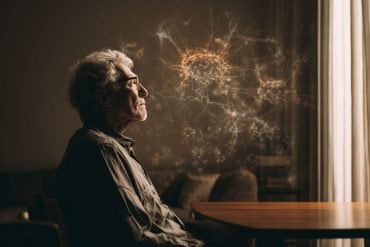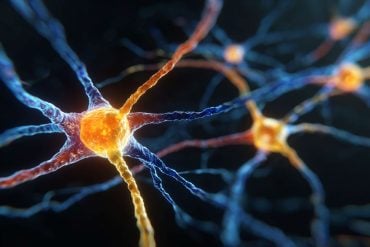Summary: Watching someone experience pain on screen activates your own brain’s touch-processing system in a highly organized, body-specific way. Visual regions of the brain contain hidden maps of the body that allow sight alone to trigger sensations normally produced by physical contact.
These maps align both with where the body appears in the visual field and with which body part is being observed. The findings reveal that the brain doesn’t simply observe the world—it actively simulates it through integrated sensory systems.
Key Facts
- Visual-Touch Overlap: Brain regions thought to process only vision also contain organized maps of the body used for touch.
- Simulated Sensation: Watching pain activates touch-related brain activity corresponding to the same body part.
- Clinical Potential: The findings may improve understanding of sensory simulation and social perception differences.
Source: University of Reading
If watching Robert De Niro ordering hammer-based retribution on a cheat’s hand in Casino instinctively made you wince, you are not alone.
Many people say that seeing bodily injury on film makes them flinch, as if they ‘feel’ it themselves. It is as if the sting leaps straight off the screen and into your skin.

But explaining why and how this happens has puzzled scientists for a long time. Now, scientists from the University of Reading, Free University Amsterdam, and Minnesota, USA, have uncovered a major clue as to why. Parts of the brain originally thought to only process vision are also organised according to a ‘map’ of the body, allowing what we see to trigger echoes of touch sensations.
The study, published today (Wednesday, 26 November), in the journal Nature, shows that watching movies can activate touch-processing regions of your own brain in a highly organised way. In short, your brain doesn’t just watch, it simulates what it sees.
Dr Nicholas Hedger, lead author from the Centre for Integrative Neuroscience and Neurodynamics at University of Reading, said: “When you watch someone being tickled or getting hurt, areas of the brain that process touch light up in patterns that match the body part involved. Your brain maps what you see onto your own body, ’simulating’ a touch sensation even though nothing physical happened to you.
“This cross-talk works in the other direction too. For example, when you navigate to the bathroom in the dark, touch sensations help your visual system create an internal map of where things are, even with minimal visual input. This ‘filling in’ reflects our different senses cooperating to generate a coherent picture of the world.”
Body maps hidden in the visual system
To show how it is possible that our sense of touch is activated purely by visual information, the researchers developed novel methods to analyse brain activity in 174 people while they watched films such as The Social Network and Inception.
Surprisingly, brain regions traditionally considered to process purely visual information showed patterns that reflected sensations on the viewer’s own body, not just what appeared on screen.
These visual regions contained ‘maps’ of the body similar to those usually found in touch-processing areas of the brain. In other words, the ‘machinery’ the brain uses to process touch is ‘baked in’ to our visual system.
The study found two ways these body maps line up with visual information. In dorsal (higher up) regions of the visual system, body maps match where things appear in our field of view: Parts of the brain tuned to feet sensations were also tuned to lower parts of the visual scene, while parts tuned to face sensations were also tuned to upper parts of the visual scene.
In ventral (lower down) regions, the body maps match what body part someone is looking at, regardless of where it appears in the visual scene. Put simply, our visual system is intimately connected to our sense of touch, mapping what we observe onto the coordinates of our body.
The researchers are particularly excited by the clinical applications of this research. Dr Hedger said: “This discovery could transform how we understand conditions like autism.
“Many theories suggest that internally simulating what we see helps us understand other people’s experiences, and these processes may work differently in autistic people.
“Traditional sensory tests are exhausting, especially for children or people with clinical conditions. We can now measure these brain mechanisms while someone simply watches a film, opening up new possibilities for research and diagnosis.”
Key Questions Answered:
A: The brain visually simulates touch using built-in body maps, activating touch regions even without physical contact.
A: Yes. Visual brain regions are organized according to body-part maps normally associated with touch processing.
A: Yes. It may help explain how the brain simulates others’ experiences and why this process differs in some neurodevelopmental conditions.
Editorial Notes:
- This article was edited by a Neuroscience News editor.
- Journal paper reviewed in full.
- Additional context added by our staff.
About this sensory neuroscience research news
Author: Ollie Sirrell
Source: University of Reading
Contact: Ollie Sirrell – University of Reading
Image: The image is credited to Neuroscience News
Original Research: Open access.
“Vicarious body maps bridge vision and touch in the human brain” by Nicholas Hedger et al. Nature
Abstract
Vicarious body maps bridge vision and touch in the human brain
Our sensory systems work together to generate a cohesive experience of the world around us.
Watching others being touched activates brain areas representing our own sense of touch: the visual system recruits touch-related computations to simulate bodily consequences of visual inputs.
One long-standing question is how the brain implements this interface between visual and somatosensory representations.
Here, to address this question, we developed a model to simultaneously map somatosensory body part tuning and visual field tuning throughout the brain.
Applying our model to ongoing co-activations during rest resulted in detailed maps of body-part tuning in the brain’s endogenous somatotopic network.
During video watching, somatotopic tuning explains responses throughout the entire dorsolateral visual system, revealing an array of somatotopic body maps that tile the cortical surface.
The body-position tuning of these maps aligns with visual tuning, predicting both preferences for visual field locations and visual-category preferences for body parts.
These results reveal a mode of brain organization in which aligned visual–somatosensory topographic maps connect visual and bodily reference frames.
This cross-modal interface is ideally situated to translate raw sensory impressions into more abstract formats that are useful for action, social cognition and semantic processing.






